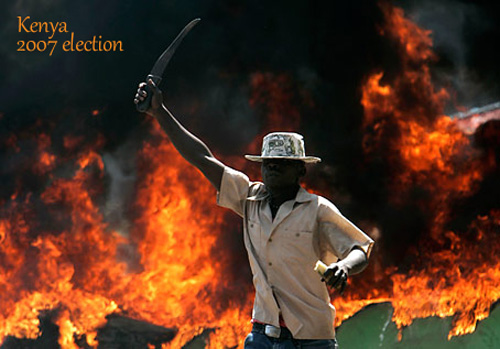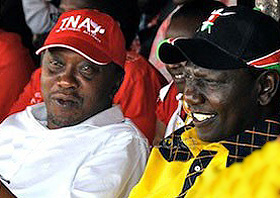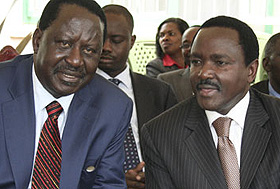
This is, of course, the big one folks. Not only will it choose the first truly democratically elected leader of Kenya, under its new and fabulous constitution, as the country’s growth explodes and it winds down its war in Somalia, but it will determine once and for all if Kenya is a safe place.
Safe to invest in. Safe to live in. Safe to visit as a tourist.
It’s that simple, and that breathtakingly important.
Most national elections determine fiscal and economic policy, security issues and legislative agendas. And this one will, too, but the most important question in this election is actually not who wins, but what happens after they do.
The polls are pretty uniform in suggesting that the winner will be Raila Odinga, the current prime minister, as I very much hope will be the case. But few people are concerned with whether the election outcome will be that Odinga wins, more than they are with whether the outcome will be as with the last election in 2007, the country explodes in violence.
Last time round the country exploded in violence because there were sore losers. Two of those sore losers are running again, one for President (Uhuru Kenyatta) and the other as his running mate (William Ruto).
The last election was the first true attempt at national democracy. I remember watching the returns on the internet very much in real time. The problem was that the returns were giving the election to Raila Odinga, who was opposing the sitting president, Mwai Kibaki.
It was blasted deja vu to Gore/Bush. Internet returns suddenly stopped and the media began reporting all sorts of irregularities in the transporting of election ballots to the counting authorities.
The sitting president declared himself the winner. It was ridiculously premature. The rest of the world shook nasty forefingers at Kenya … except for America. President George Bush called up Mwai Kibaki to congratulate him on his victory. It was around 11 p.m. Kenyan time. Kenya media exploded with the announcement.
No other world leader did the same. And the next morning fires started.

But it quickly degenerated into an ethnic war. Mwai Kibaki is Kikuyu. Raila Odinga is Luo. They are the two largest tribes in Kenya, and while as in Northern Ireland the Catholics are generally the poor when compared to the Protestants, so are the Luo when compared to the Kikuyu. So the battle was forged on grounds long prepared.
Uhuru Kenyatta, who was set to become a major official in the Kibaki government, is also Kikuyu. William Ruto is a Kalenjin, historically an arch enemy of the Kikuyu, but in this case the enemy of my enemy is my friend, and so the Kalenjin allied themselves with the Kikuyu.
Ethnic violence began to tear the country apart.
According to voluminous documents now in The Hague as the trial of Kenyatta and Ruto progresses, those two so-called national leaders planned and fomented the violence.
It took a number of months, Kofi Annan, heavy hands and wallets from the U.S. and Britain to quell the violence and create a power-sharing agreement between Kibaki and Odinga which held until today.
It has been a remarkable recovery. Odinga and Kibaki have actually worked well together, mostly because Odinga despite the details of the power-sharing agreement, always took a backseat to Kibaki.
But under their leadership, the country created a fantastic new constitution and steered towards a path of unexpected economic growth. Kibaki never intended to stand for election this time, and needless to say, that helped enormously.
Kenyans remain very ethnically racist. The younger are much more tolerant than the older, but even the young struggle with ethnic identity. And because there are more than 40 ethnic tribes in Kenya and really more than half dozen greater ethnic coalitions, there is no single ethnic group that can determine a national election.
Odinga probably won last time (as Gore did) and is projected to win this time, because his policies – not his ethnicity – align best with most Kenyans. It is fair to say if he doesn’t win, it has less to do with policy than ethnicity.
Will Kenyans reach into their minds rather than their hearts for how to vote? That, of course, is a separate question from what they will then do if their decision is not validated by the outcome.
Thanks for this thumbnail sketch of what are the divisions in Kenya. I will research more with at least some familiarity with the factions – ancient and enduring, it seems – that are at play in Kenya. I do feel that more and more governments supported by (propped up by) the US or Europe will find themselves suspect for just that reason – rightly or wrongly. Glad I signed up for these. Kikuyu, Kalinjen and Lao are words I should know… and know I do, as well as Odinga, Kabiki and Ruto and Kenyatta. I will turn to various press now that I know the players. Ethnic identities (which you call racial) are strong; are there religious identities associated with the various groups?